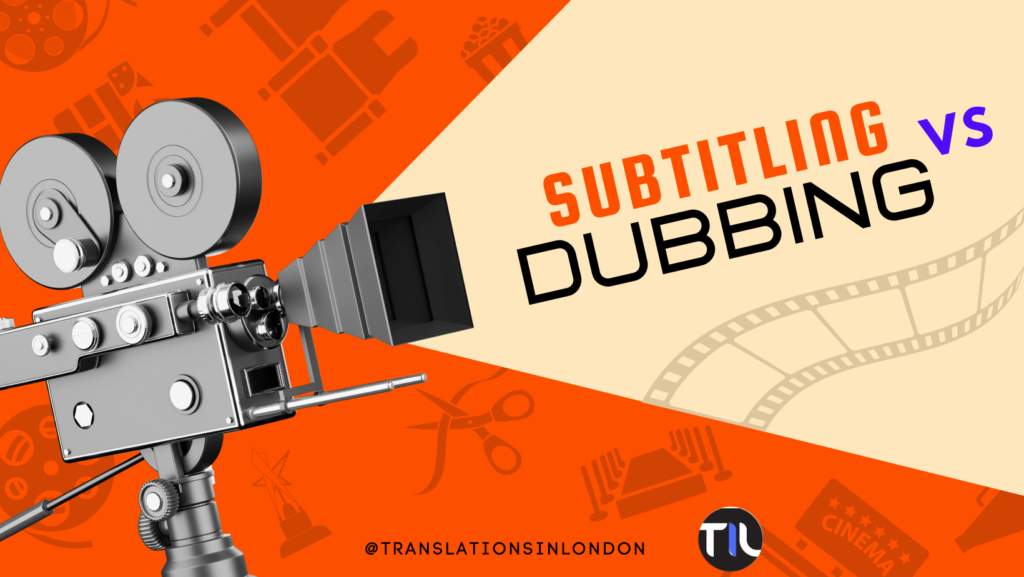
Subtitling and dubbing represent the two main methods used to translate film, TV programs and media in general. Only in recent years have they started receiving attention in the studies of translation strategy.
But let’s see what they are in more detail:
Subtitling can be divided into two areas: one is just for translation reasons and the other for deaf or people hard of hearing.
The first consists of displaying what the actors are saying, which is usually placed on the bottom of the screen, but this does not include literally every word; translators have to make a representation in two lines and each line must contain no more than 35 characters (spaces included). This method has both positive and negative points; the positive is that you can listen to the original language and the original voices of the actors, but the negative is that you have to pay attention both to the scenes and to the written text. For some this can prove quite difficult, can’t it?
The second method, instead, has similar characteristics to the first but it differs in two specific ways. One is that the text on the bottom of the screen contains every word the actors are saying and the other is that together with the script there is also written audio information, for example background sounds and the intonation of the phrases spoken by the actors… ( see an example here: https://youtu.be/1n82pY_Ssmo)
Dubbing is the translation of each word the actors are saying and adapting the words to the movement of their mouths. The positive to this is that it is easier to follow. What’s more, from the point of view of the audience it’s closer to seeing a mother tongue film. The negative is that it is much more expensive than subtitling and it generally happens that the voices of the target language are not as convincing as the original voices.
Many people ask themselves which is better; in my opinion, they must coexist.
For example, if someone wants to learn or wants to improve a language, listening to the source language and reading the subtitles in the foreign language is a great exercise (if you are a student like me you will appreciate this advice). However, if someone’s objective is not learning a language, why should he/she have to struggle?
If we are now able to choose the way in which we want to experience a film it is thanks to the work of the editor Louis Loeffer and the Italian-American actor Augusto Galli, who dubbed a scene of Fox’s film “Married in Hollywood” in 1929 (“Maritati a Hollywood“). The result was unsatisfying but it opened the doors to the full dubbing experience. The first film to be entirely translated in Italian was “Carcere“, directed by George W. Hill and produced by Metro-Goldwyn-Mayer. The result was Italian dialogues with a strong English accent, as the film was portrayed by Italian-Americans or Italians who had migrated to the US.
Nowadays, thanks to good translators and specialist voice over actors, when you see a foreign film it seems much more than ever that the film in question was written and played by native actors. Indeed, dubbing and subtitling schools are now widespread and year after year they have developed better techniques and experts in the field.
Which technique do you prefer?